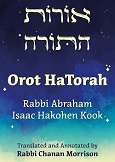The Talmud in Sukkah 45b records the following pronouncement by the great mystic Rabbi Shimon bar Yochai:
“I have seen people of high attainments (bnei aliyah), but they are few. If there are a thousand, then I and my son are among them. If there are a hundred, then I and my son are among them. And if there are only two, then they are me and my son.”
How could Rabbi Shimon make such a bold — even boastful — claim?

Lost in Jaffa
Although he was chief rabbi of Jaffa, Rav Kook was not an expert in the streets and pathways of Jaffa. Once he went for a walk with Rabbi Zalman Shach, assuming that his companion knew the way. Soon it became apparent that Rabbi Shach was also unfamiliar with the area, and the two scholars realized that they were lost.
How did they find their way back? Rav Kook hid in a nearby courtyard while Rabbi Shach stopped a child and asked him where Rav Kook lived. After the boy described where to go, Rabbi Shach waited until he had left, approached Rav Kook, and together they returned home.
(Not long after this incident, an article appeared praising Rav Kook’s erudition and scholarship. The writer, who wanted to describe the Rav’s expertise in both the Babylonian and Jerusalem Talmuds, paraphrased a Talmudic phrase and wrote that “the paths of the Jerusalem [Talmud] are as clear to him as the streets of Jaffa.”
Rav Kook smiled when he heard about the article. “Woe to me,” he wryly observed, “if I were to know the Jerusalem Talmud the way I know the streets of Jaffa!”)
During his later years in Jerusalem, Rav Kook would spend short summer vacations in the quiet neighborhood of Kiryat Moshe. One evening, Rabbi Yitzchak Hutner, whom Rav Kook greatly favored, came to visit. The Rav went on a short walk with his young guest. Remembering what had happened in Jaffa, he asked his companion whether he knew the area; otherwise, he suggested, it would be best not to stray too far from the house, so they would not need to ask for directions.
Rabbi Hutner responded, “I am sure that if the Holy Temple were built and you were officiating as the High Priest, you would know every entrance and passageway of the Temple.”
Rav Kook considered this comment and humbly agreed. “Yes. With holy matters, one remembers.”
Souls of the Upper Realm
Rav Kook gave an original interpretation for Rabbi Shimon bar Yochai’s expression, bnei aliyah. One meaning of the word aliyah is ‘upper floor’ or ‘attic’ (see, for example, II Kings 4:10.) The bnei aliyah are those lofty souls who live in the ‘upper floor’ of reality. Their point of reference is the spiritual world, and in order to understand the physical world — the bottom floor — they must lower their sights.
The vast majority of people are firmly entrenched in this world. Their point of reference is the physical realm. For them, comprehending the spiritual reality requires intense intellectual effort; they need examples and allegories based on the physical world in order to understand spiritual truths.
For the bnei aliyah, however, it is just the opposite. These elevated souls truly live in the spiritual realm. Understanding the workings of that elevated reality comes naturally to them, while relating to the physical world requires a measure of intellectual effort.
Thus Rabbi Shimon bar Yochai was simply reflecting on the basic orientation of his soul. He and his son were bnei aliyah, at home in the higher spiritual dimension. And it was from that elevated perspective that they viewed the physical world.
(Silver from the Land of Israel. Adapted from Mo'adei HaRe’iyah, pp. 81, 431; Arpilei Tohar (Shilat edition), p. 111)





